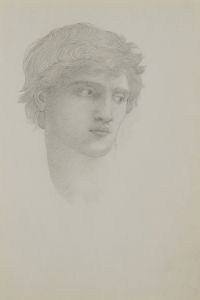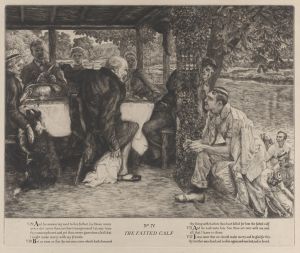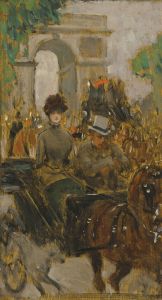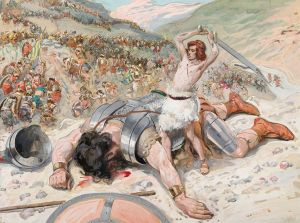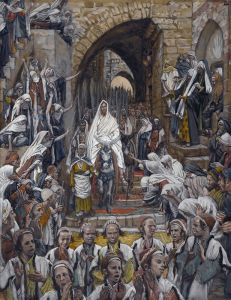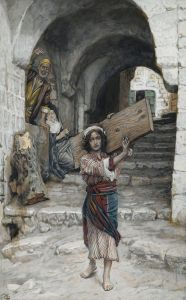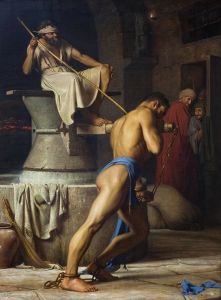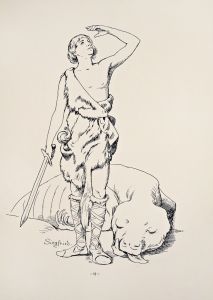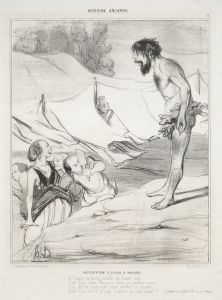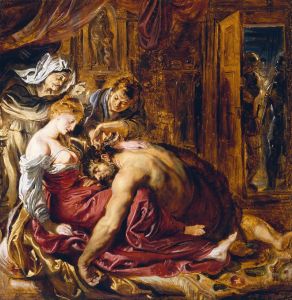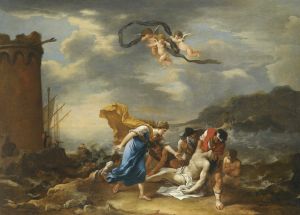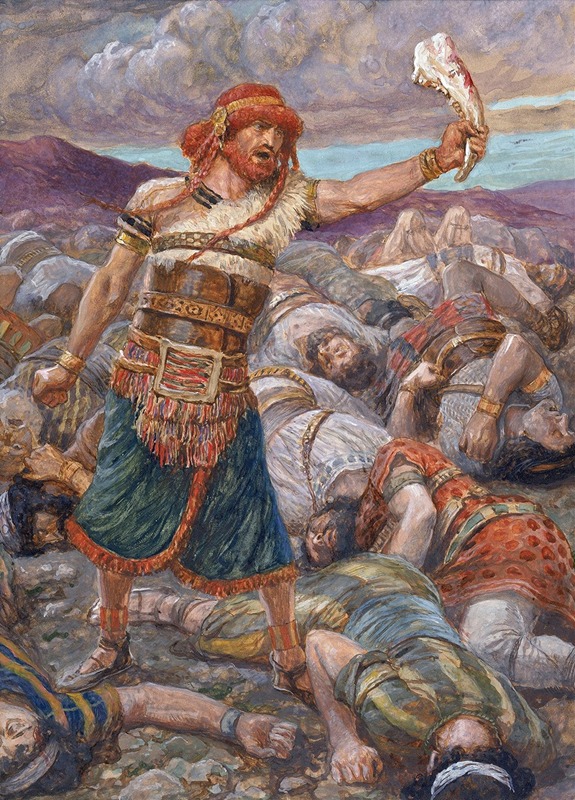
Samson Slays a Thousand Men
A hand-painted replica of James Tissot’s masterpiece Samson Slays a Thousand Men, meticulously crafted by professional artists to capture the true essence of the original. Each piece is created with museum-quality canvas and rare mineral pigments, carefully painted by experienced artists with delicate brushstrokes and rich, layered colors to perfectly recreate the texture of the original artwork. Unlike machine-printed reproductions, this hand-painted version brings the painting to life, infused with the artist’s emotions and skill in every stroke. Whether for personal collection or home decoration, it instantly elevates the artistic atmosphere of any space.
"Samson Slays a Thousand Men" is a painting by the French artist James Tissot, part of his extensive series of works illustrating the Bible. James Tissot, born Jacques Joseph Tissot (1836–1902), was a renowned painter and illustrator known for his detailed and realistic style. After achieving success with his depictions of fashionable society in Paris and London, Tissot experienced a religious awakening in the late 19th century, which led him to focus on biblical themes.
The painting "Samson Slays a Thousand Men" is based on the biblical story found in the Book of Judges, Chapter 15, in the Old Testament. This narrative describes the exploits of Samson, one of the last judges of the ancient Israelites, who was known for his extraordinary strength. According to the biblical account, Samson was empowered by God to deliver the Israelites from the oppression of the Philistines.
In the story, Samson is captured by the Philistines, who bind him with ropes. However, the Spirit of the Lord comes powerfully upon him, and he breaks free from his bonds. Finding the jawbone of a donkey, Samson uses it as a weapon to slay a thousand Philistine men. This act of strength and divine intervention is a pivotal moment in the narrative of Samson's life, showcasing his role as a divinely appointed leader and warrior for the Israelites.
Tissot's depiction of this dramatic scene is characterized by his meticulous attention to detail and his ability to convey the intensity of the moment. The painting captures the chaos and violence of the battle, with Samson at the center, wielding the jawbone with a dynamic and forceful posture. The composition likely emphasizes the physicality and determination of Samson, reflecting Tissot's interest in portraying biblical figures with a sense of realism and immediacy.
Tissot's biblical series, including "Samson Slays a Thousand Men," was the result of extensive research and travel. He visited the Middle East to study the landscapes, architecture, and cultural details that would inform his work, striving for historical accuracy and authenticity in his representations. This dedication to detail is evident in the costumes, settings, and expressions of the figures in his paintings.
The series was well-received and contributed to Tissot's reputation as a significant religious artist of his time. His works were exhibited widely and continue to be appreciated for their artistic merit and the insight they provide into biblical narratives. "Samson Slays a Thousand Men" is part of Tissot's larger collection of biblical illustrations, which includes over 350 watercolors depicting scenes from both the Old and New Testaments.
Today, Tissot's biblical paintings are held in various collections, with many housed at the Brooklyn Museum in New York, which acquired a significant portion of his biblical series. These works remain a testament to Tissot's skill as an artist and his deep engagement with religious themes, offering viewers a vivid and compelling interpretation of biblical stories.





